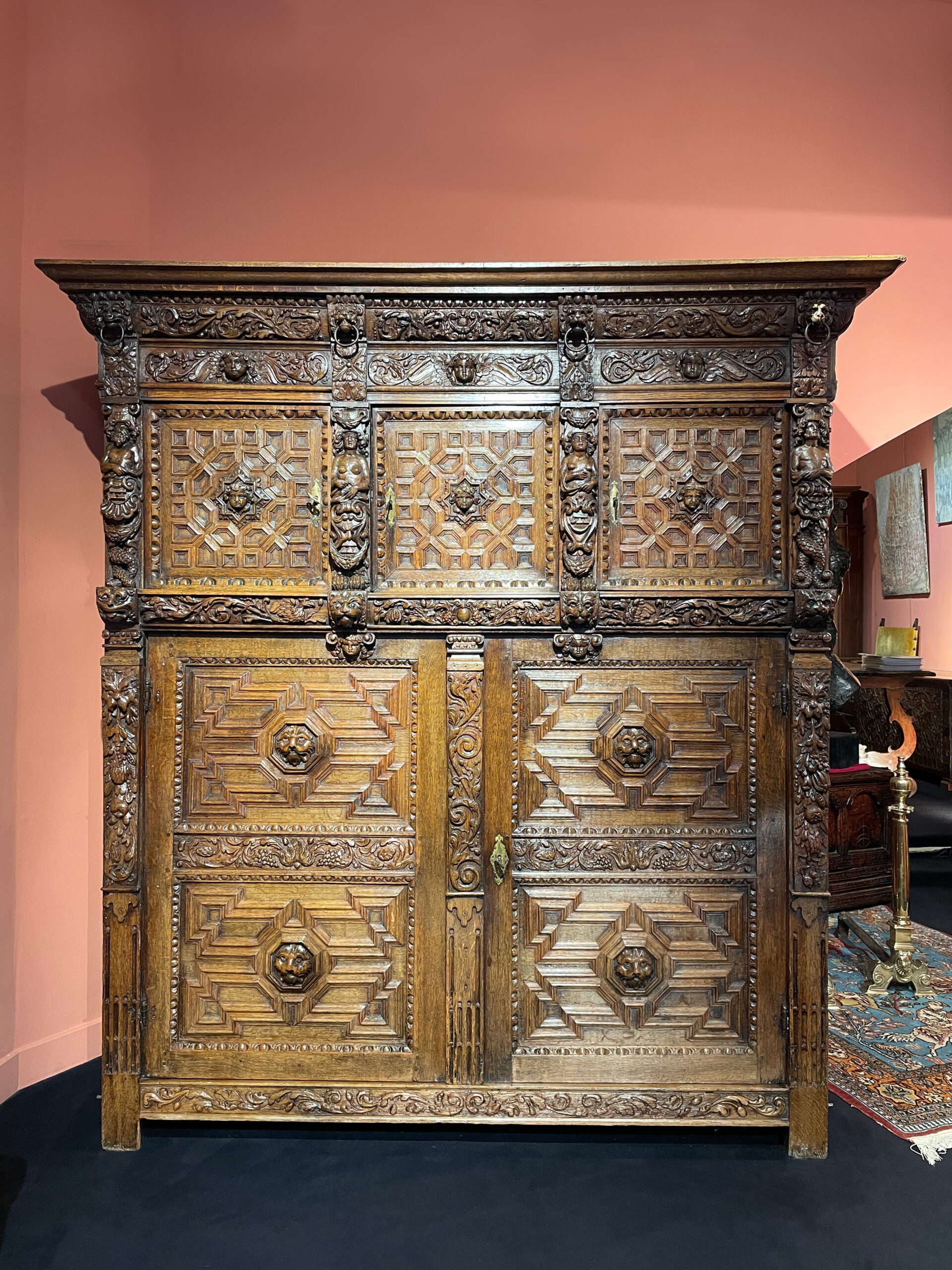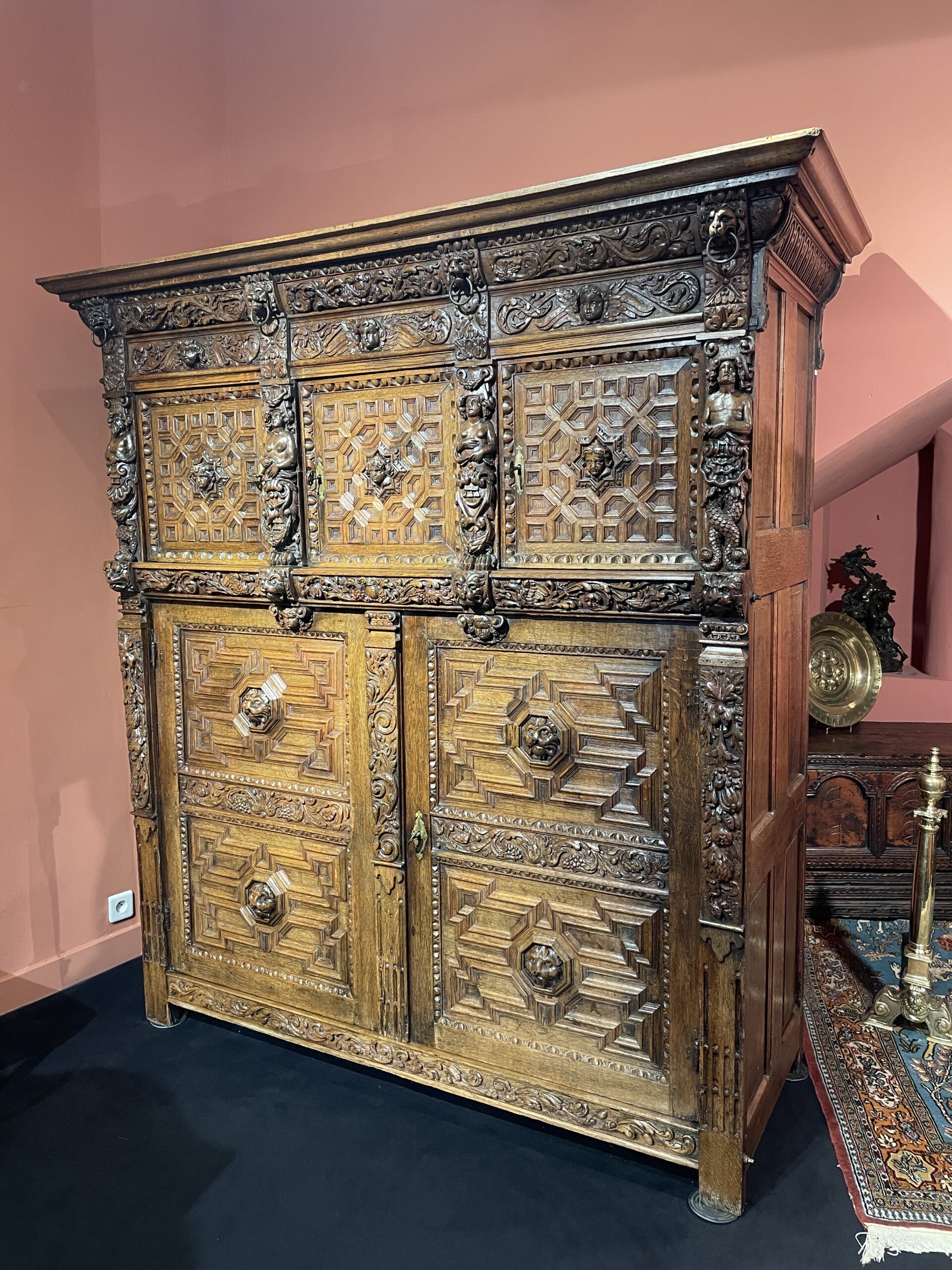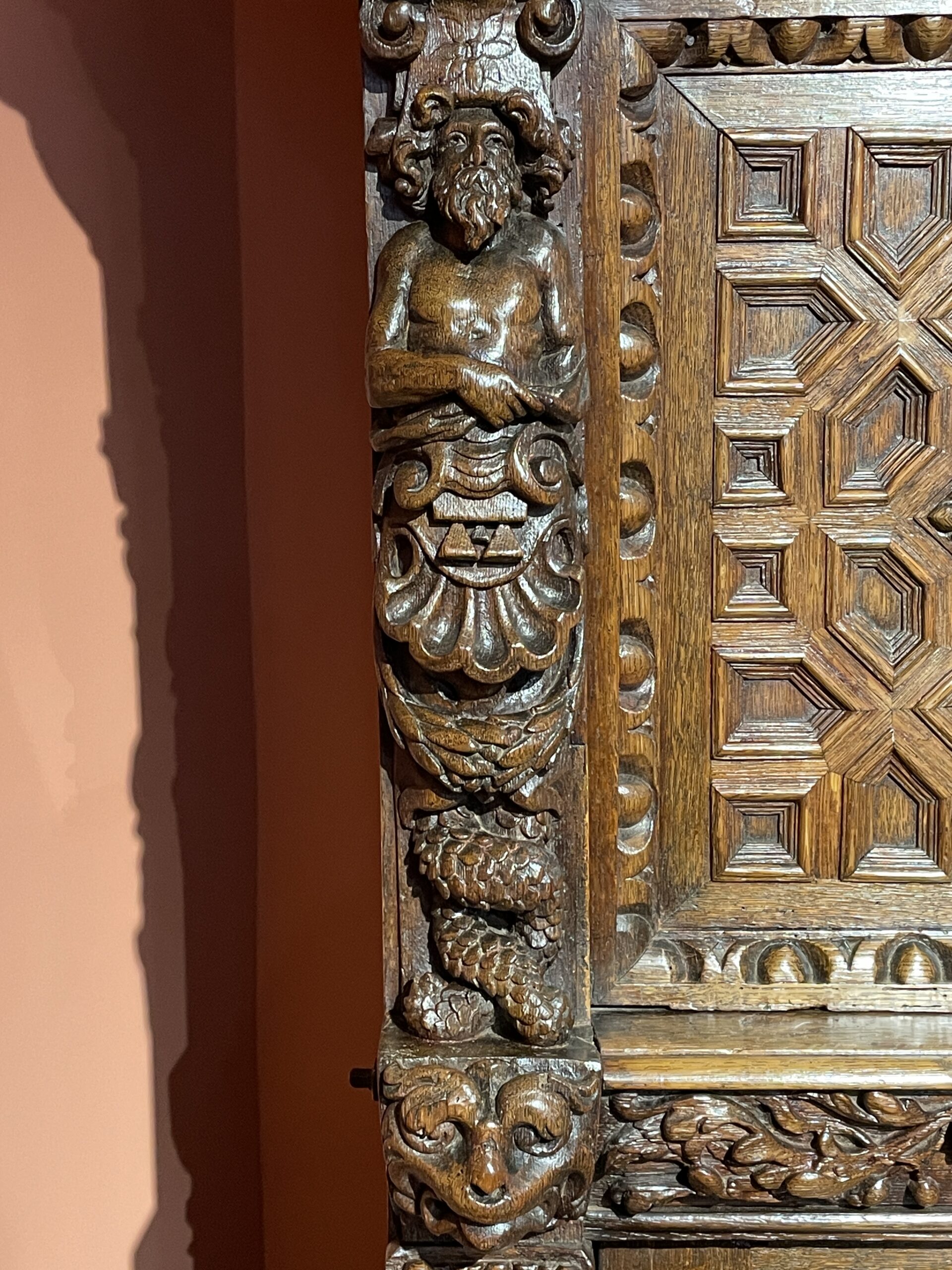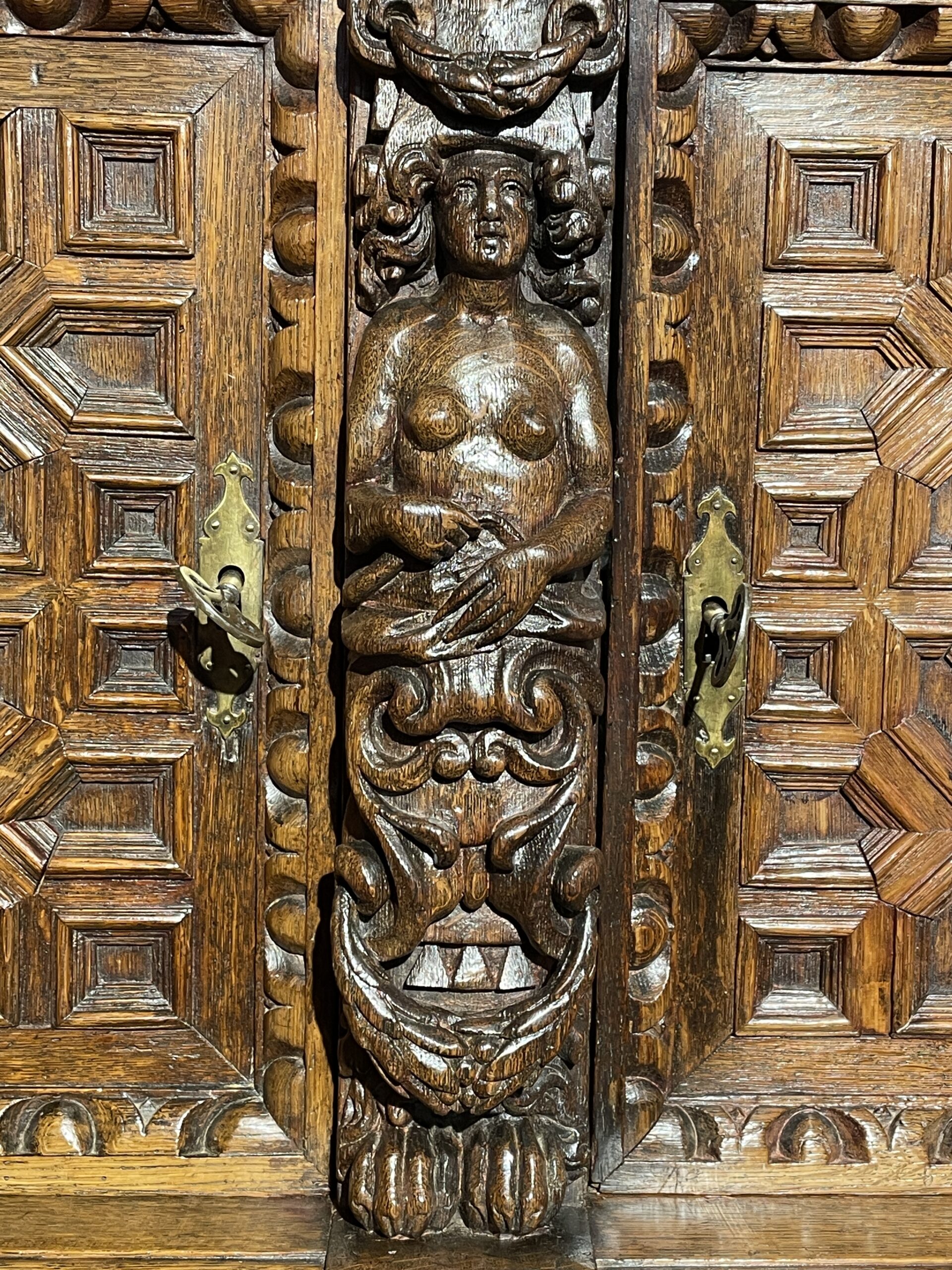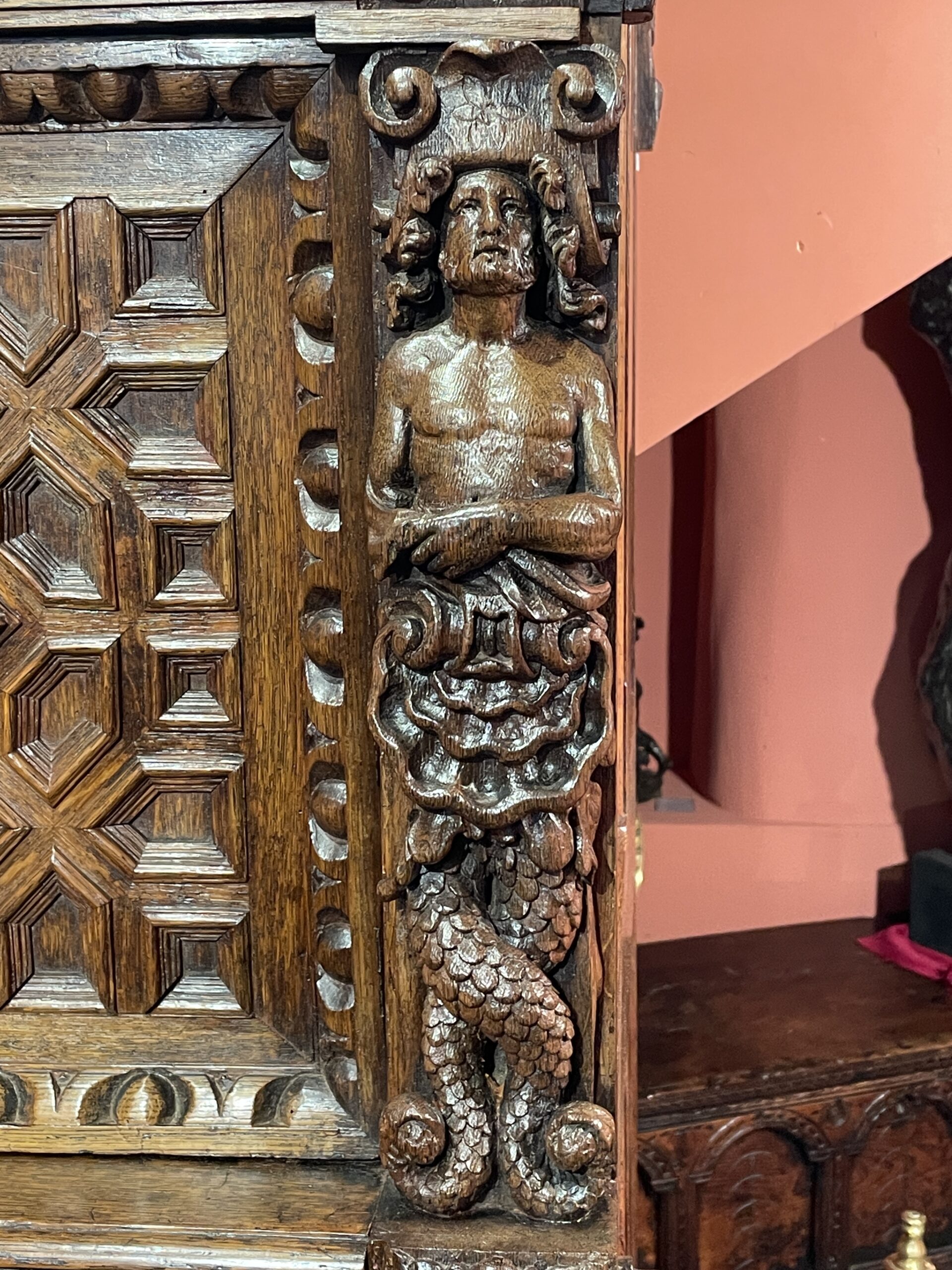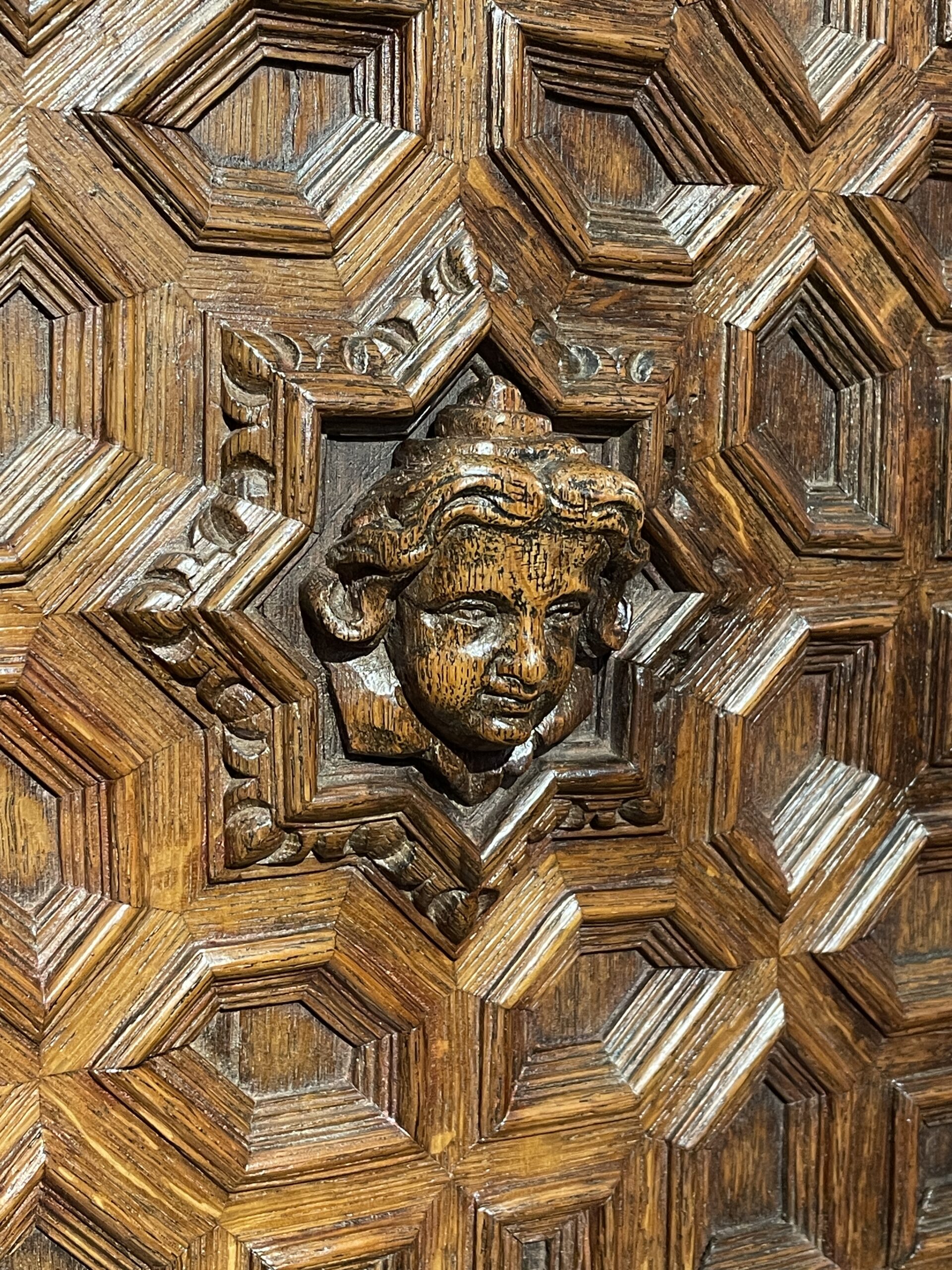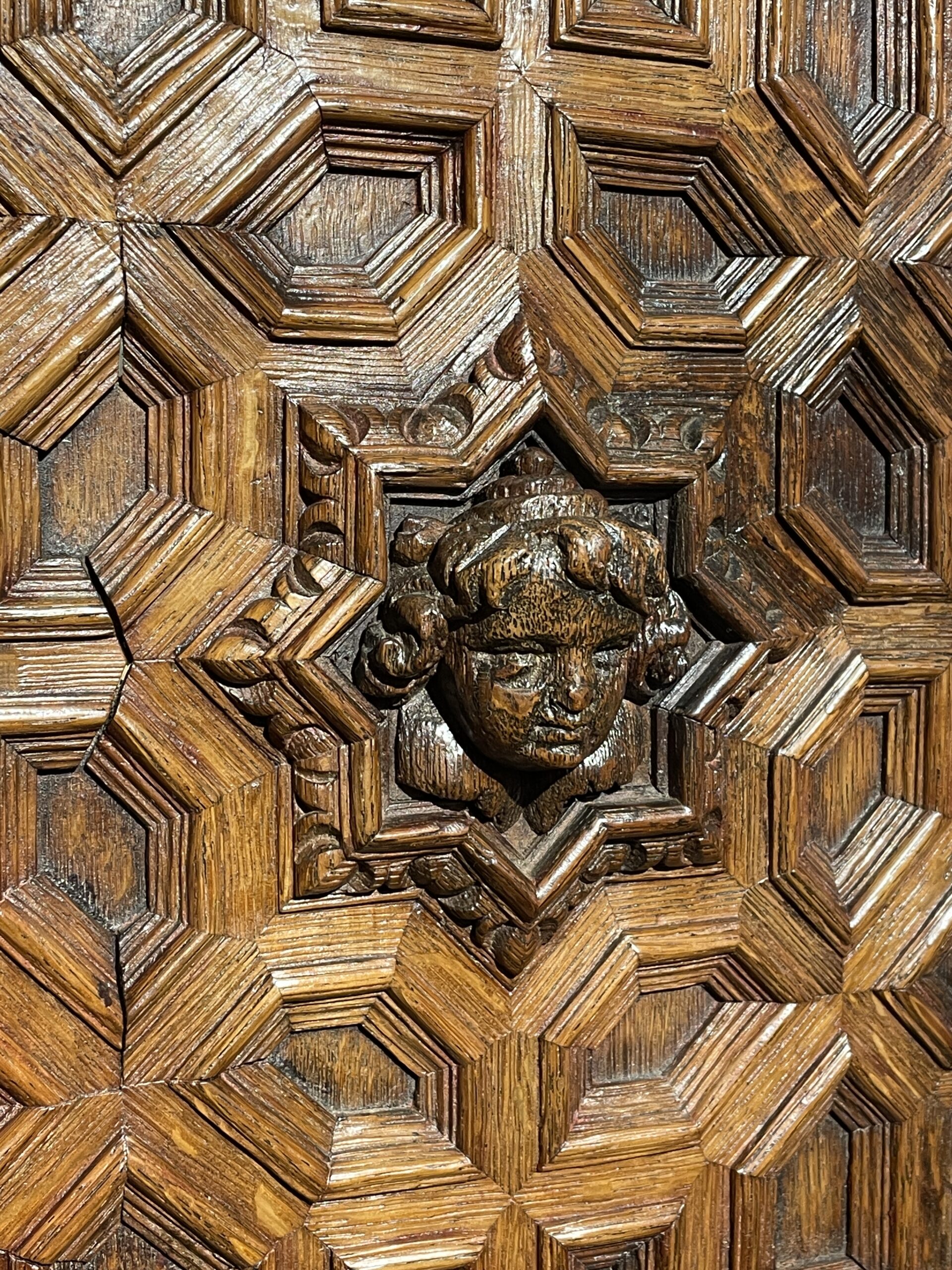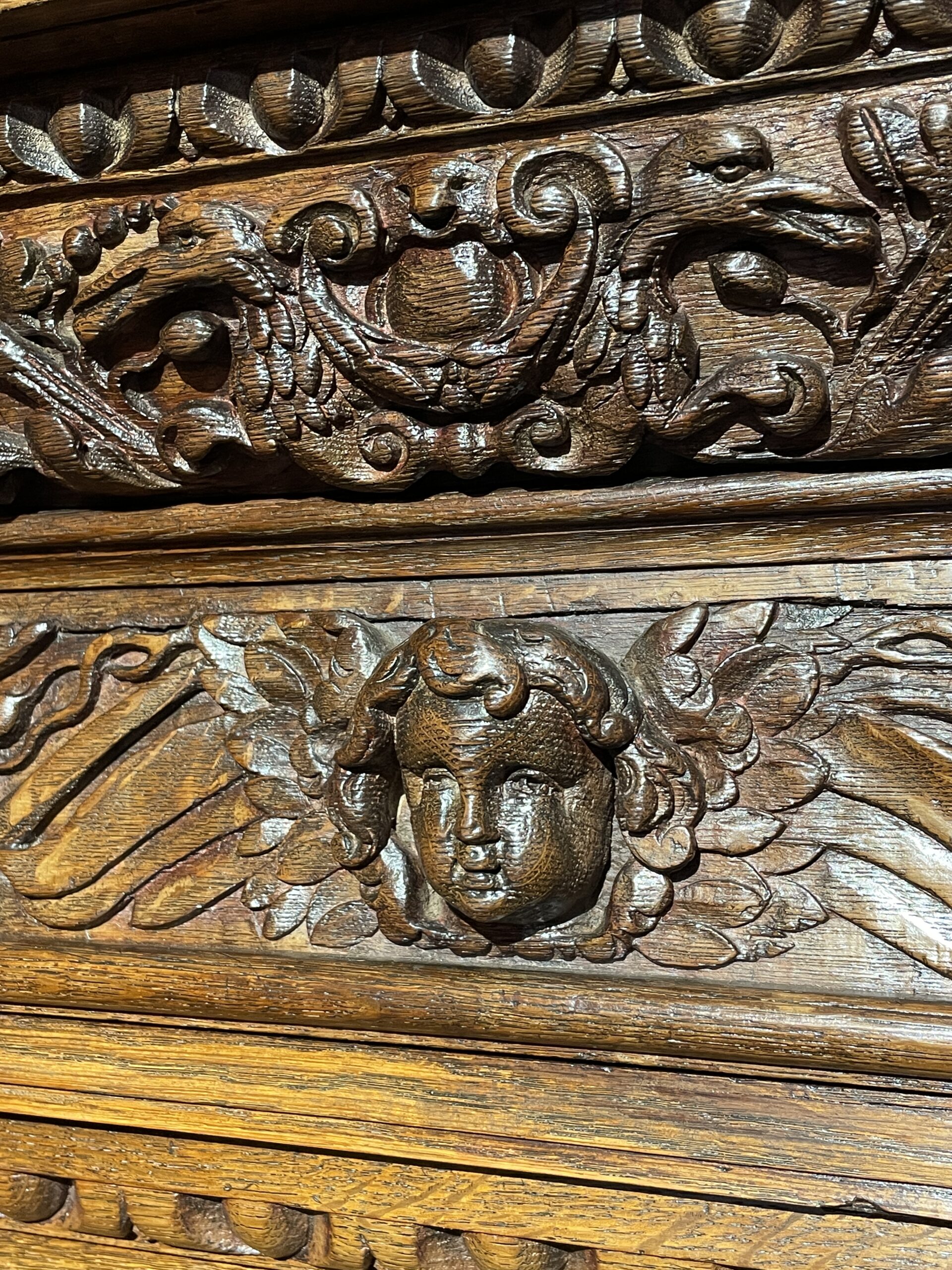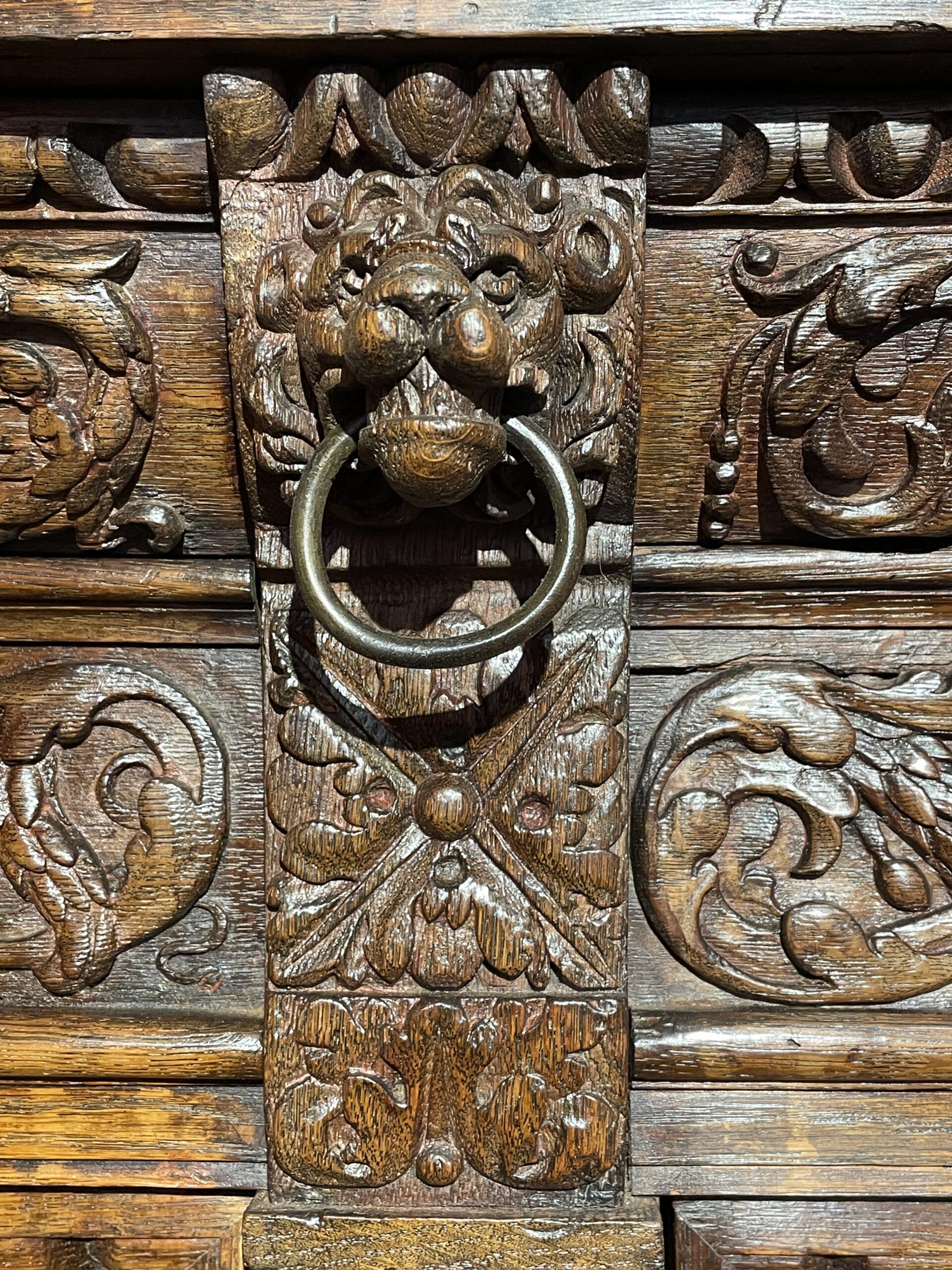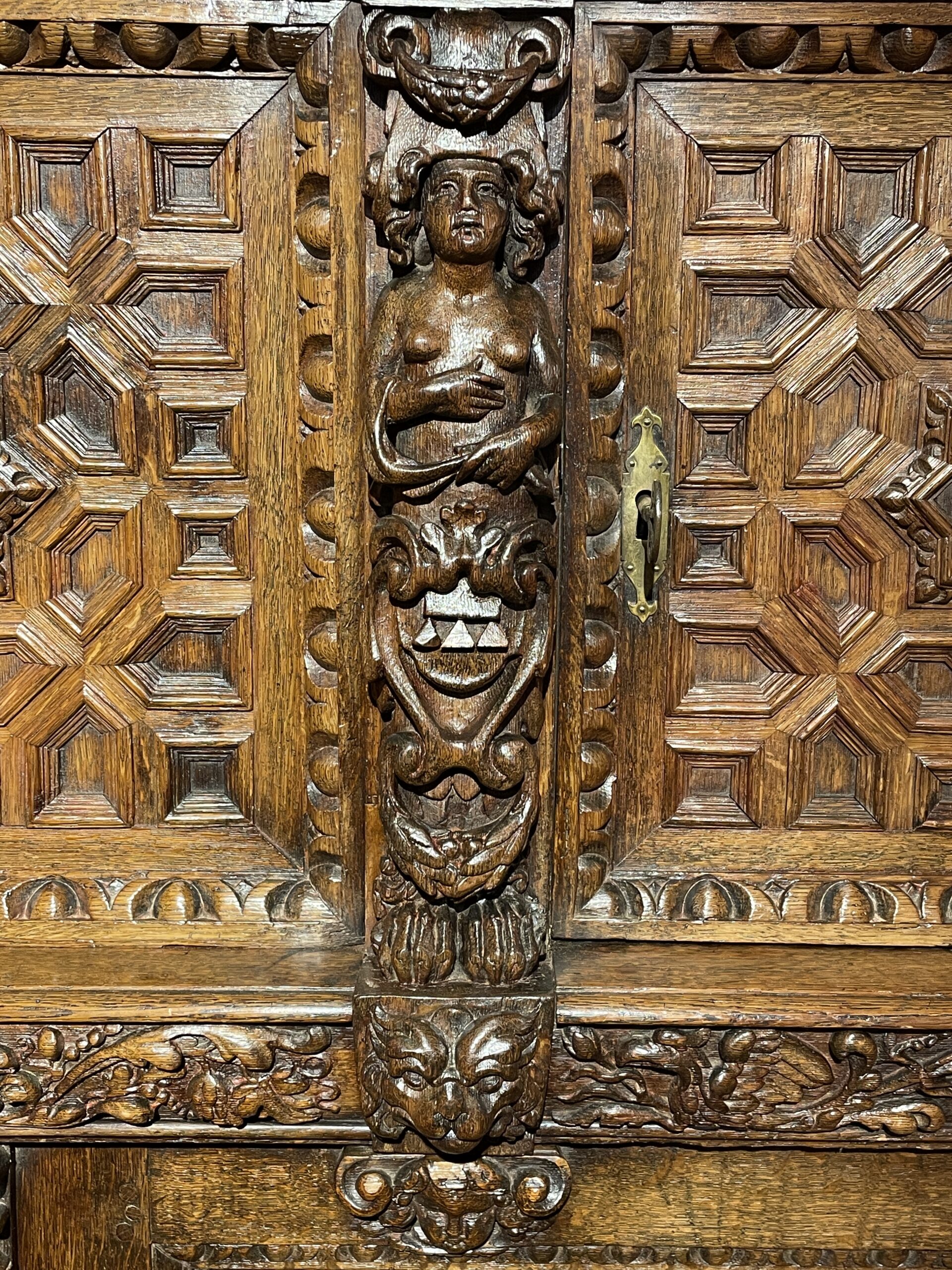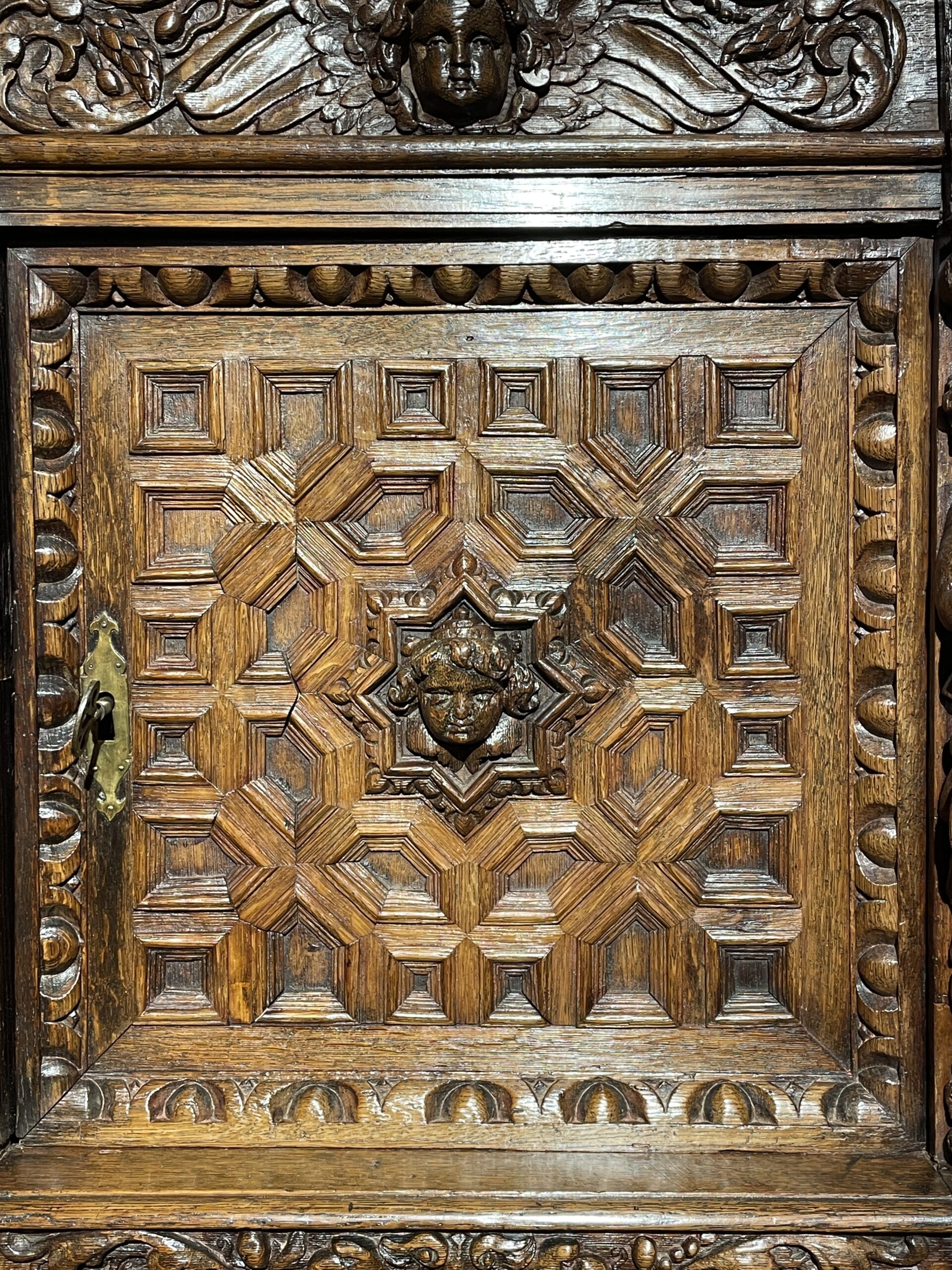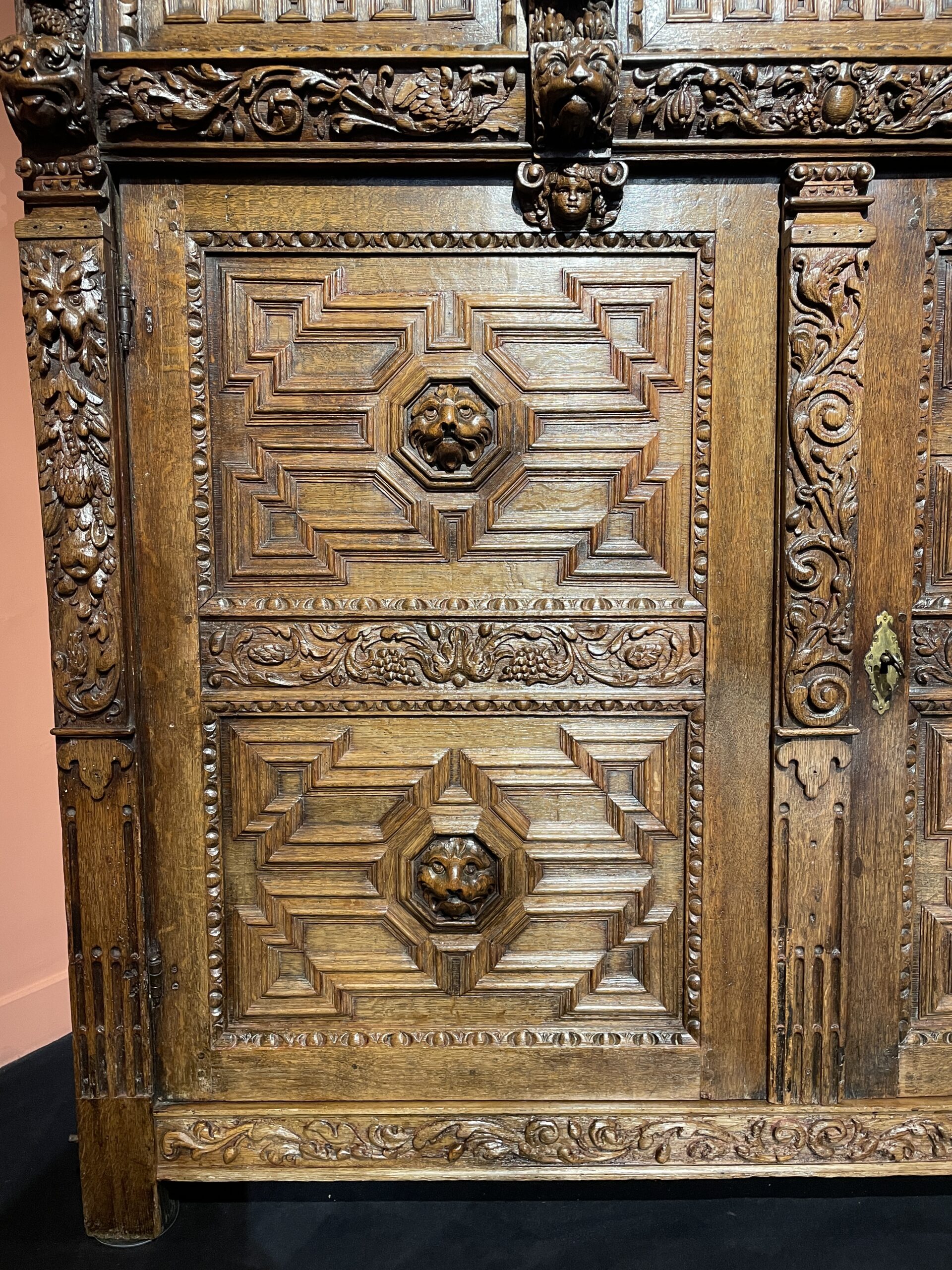Description
A common tradition connects Flemish furniture from northern France to Holland: the use of oak wood, the prominence of sideboards whose designs evolved from chests, and the appreciation for rich carved decoration. This Ribbank Cabinet, of exceptional craftsmanship, is a perfect example.
Composed of two stacked sections without recess, it features exquisite ornamentation incorporating terms, putti, leonine masks, and geometric panels. The overall design is structured with rigorous symmetry, echoing the principles of ancient architecture.
Highly valued since the rediscovery of the Roman Vitruvius’ treatise on classical architecture and the 1539 translation of the Italian architect Serlio’s Four Books of Architecture, architectural principles influenced furniture design, particularly in pieces like this one, known as a Ribbank.
These research efforts were essential for the joiners and sculptors of the Renaissance and inspired the preparation of another publication, also concerning the Five Orders, this time by a Flemish draftsman, Hans Vredeman de Vries. Around 1580, he followed this with drawings of ornamental motifs for furniture.
The cabinet is designed with a ternary rhythm for the lower section and a quaternary rhythm for the upper section. Its entire façade showcases a profuse and deeply carved decorative scheme.
The Upper Body
Richly adorned, the cabinet features three doors separated by male caryatids at the corners and female ones at the center, elegantly dressing the vertical supports.
On the left, a mature male figure with a finely sculpted beard, draped in shell and scroll motifs, tapers into a bifurcated fish tail with meticulously detailed scales.
The next figure, a woman with an exposed chest, is clad in Renaissance motifs that, from a distance, suggest a stylized mask.
The same treatment is applied to the third caryatid.
The final figure depicts a young man gazing heavenward, draped in a shell with undulating waves and ending in a bifurcated fish tail reminiscent of the first.
The three doors, framed by an ovolo molding, are each adorned with a high-relief cherub centered within a star motif, which expands into a geometric pattern rendered in relief with molded panels, simulating the effect of perspective marquetry.
Vegetal motifs are arranged along the consoles and the double entablature, interspersed with leonine masks gripping iron rings in their mouths and winged putti frolicking amidst leafy arabesques.
The frieze, punctuated by prominent animal muzzles, is itself decorated with a floral tableau enriched with fruits, eagles, and a central medallion.
The Lower Body
Comprising two doors and four geometric paneled sections, each centered with a leonine mask seemingly emerging from the cabinet, this piece is a marvel of craftsmanship. The lateral supports also feature lion figures, their mouths grasping cascades of the most luxuriant fruits. At the base, an arborescent frieze echoes the design of the upper cornice.
This distinct geometric design, present on both sections of the cabinet, evokes interior architectural motifs, drawing inspiration from the parquet flooring and ceilings of the affluent Flemish bourgeoisie’s apartments.
Carved with remarkable vigor, this Ribbank Cabinet showcases two recurring themes in Flemish furniture: Putti riding volutes and the intricate yet commanding geometric network of paneled sections.
This rare Ribbank, with its balanced proportions, bold and dynamic carved decoration, offers a valuable insight into the interiors of one of the most prosperous and active bourgeoisies in Europe.

